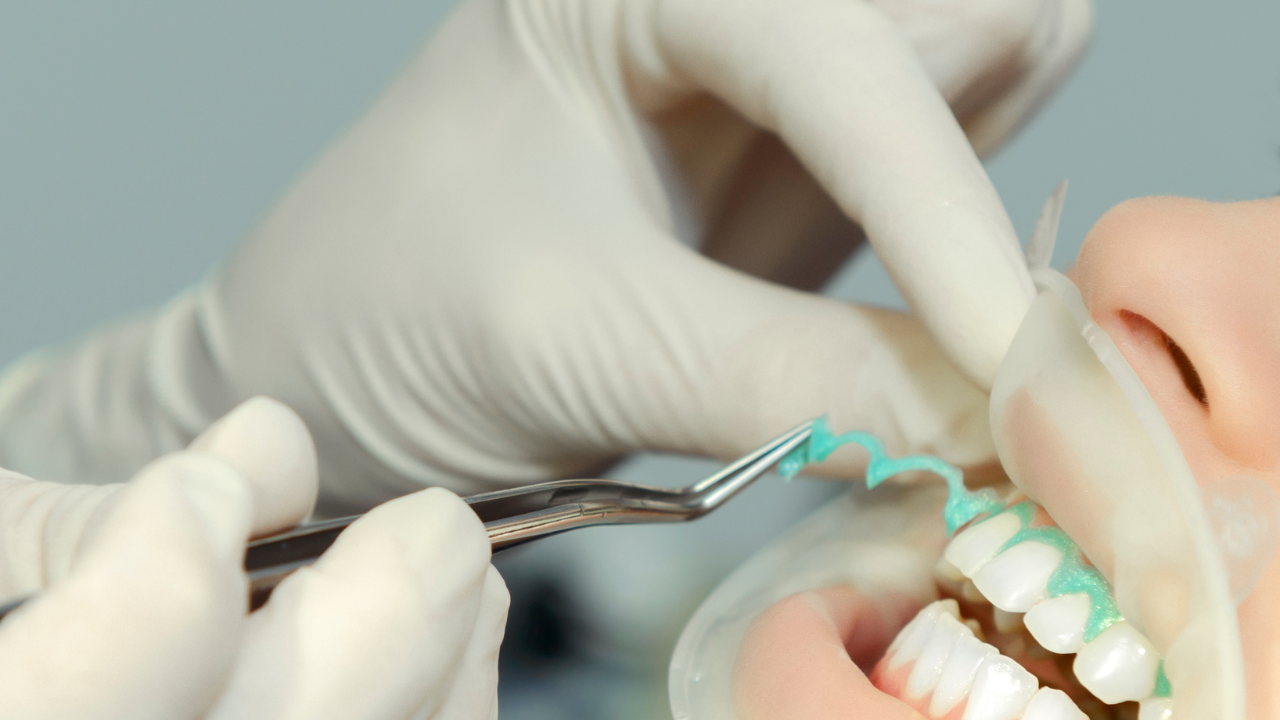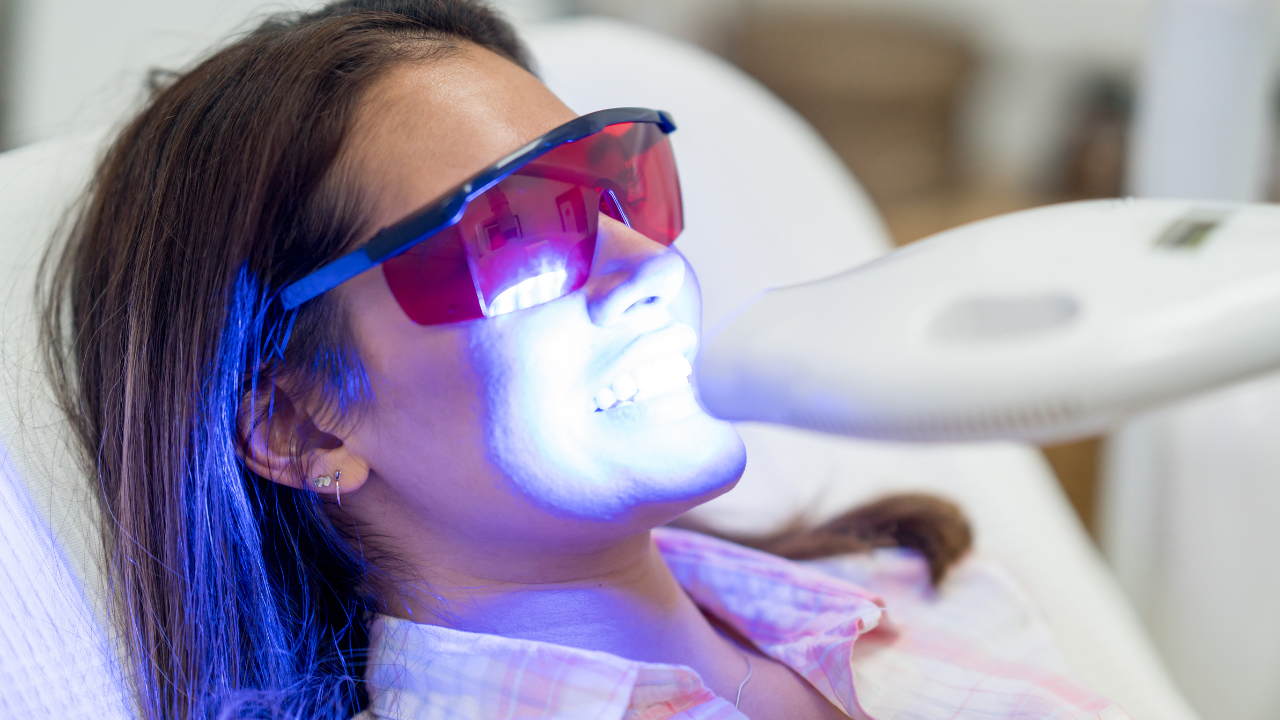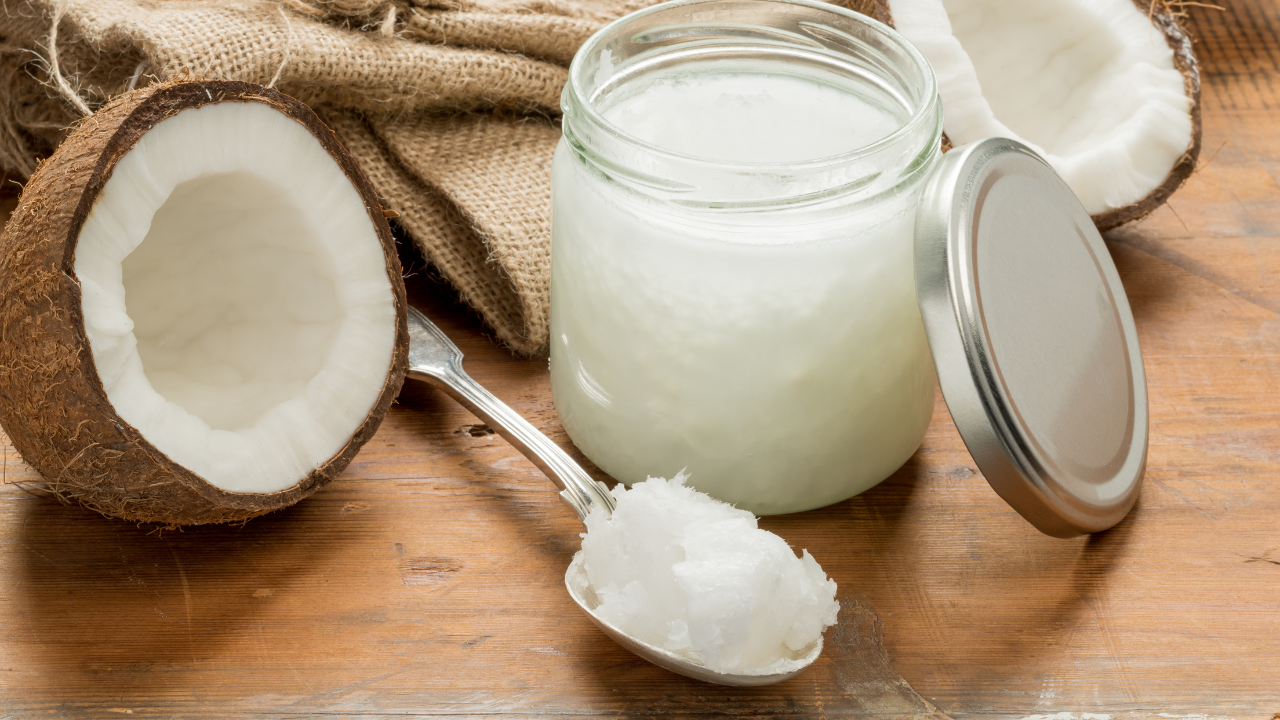Teeth Whitening While Breastfeeding
We explore the potential risks of teeth whitening while breastfeeding, different methods and ingredients, as well as natural alternatives.

Teeth Whitening and Breastfeeding

When it comes to teeth whitening during breastfeeding, there are concerns about its safety due to limited research. Dentists typically avoid performing whitening treatments on pregnant or breastfeeding women as a precautionary measure.
In this article, we'll explore the potential risks of teeth whitening during this time, different methods and ingredients as well as alternatives. By understanding these factors, you can make an informed decision.

Safety of Ingredients While Breastfeeding
Teeth whitening treatments include bleaching and non-bleaching options, whitening strips, and toothpaste.
According to research from the National Library of Medicine, carbamide peroxide, a common ingredient, is unlikely to be significantly absorbed into the bloodstream or breast milk. Similarly, hydrogen peroxide used in tooth whitening is also considered low risk for breast milk. (Natural tooth whitening recipe in video below)
Whitening toothpaste often contains sodium monofluorophosphate (MFP) or sodium fluoride to prevent cavities and improve enamel. The safety of these ingredients during pregnancy and breastfeeding has not been extensively studied, but they are unlikely to pose a risk to the baby.
Blue (LED) Light Therapy's safety during pregnancy and breastfeeding is uncertain. Still, it is not expected to increase the risk of birth defects as it primarily affects teeth and is unlikely to enter the bloodstream or breast milk.
Alcohol, which should be avoided during pregnancy, is used in some whitening products but is not expected to be absorbed into the bloodstream or breast milk if used topically and not ingested.

One concern about teeth whitening while breastfeeding is the potential transfer of chemicals to breast milk. Informing your dentist about your breastfeeding status is crucial. Find a family dentist like those at bafdentistry.com.
Teeth whitening during breastfeeding requires careful consideration due to limited research. While the exact risks remain uncertain, it's best to be cautious. Dental professionals prioritize your well-being and your baby's, so it's wise to follow their guidance.
Focusing on good oral hygiene, regular dental check-ups, a balanced diet, and prenatal vitamin intake can contribute to overall oral health and well-being.
Alternatives to Whitening
- Orthodontics to correct misalignment not only improves the appearance of the teeth but can also improve oral health by making teeth easier to clean.
- Cosmetic dental procedures like veneers or bonding can change the color and shape of your teeth, drastically improving your smile's aesthetic.
Natural Teeth Whitening While Breastfeeding
The good news is, you can achieve a brighter smile without harsh chemicals. Here are some natural ways to whiten teeth while breastfeeding:

#1. Oil Pulling with Coconut Oil
Coconut oil pulling is believed to effectively remove plaque and bacteria from the mouth, contributing to teeth whitening. Choose a high-quality organic oil that does not contain any harmful ingredients.
To practice oil pulling, swish 1 to 2 teaspoons of liquid coconut oil in your mouth for 10 to 30 minutes, making sure not to let the oil touch the back of your throat. It is important not to swallow the oil as it contains toxins and bacteria from your mouth. Afterward, spit the oil into the toilet or a wastepaper basket to avoid clogging your drain. Rinse your mouth with water. Finally, brush your teeth. A 2015 study found that oil pulling using sesame oil and sunflower oil reduced gingivitis caused by plaque. Since plaque buildup can cause teeth to turn yellow, oil pulling could whiten teeth.
#2. Brush Your Teeth with Baking Soda
Apart from being a leavening agent in baking, baking soda can clean and whiten teeth. But is it as safe and effective as regular toothpaste? Abrasive substances like baking soda and activated charcoal can potentially cause enamel damage if used excessively or improperly but they are safe to use while breastfeeding.
The advantages:
- Reduces plaque and gingivitis: Baking soda disrupts dental biofilms, such as plaque, by brushing away bacteria and preventing damage to teeth and gums.
- May reduce bacteria: Rinsing your mouth with a baking soda and water solution can increase the pH level, making it less acidic and inhibiting the growth of cavity-causing bacteria.
- Whitens teeth: Baking soda possesses natural whitening properties, effectively removing stains and brightening your smile. It is commonly used in commercial toothpaste.
- Fluoride-free option: Baking soda can be a suitable choice for those who prefer to avoid fluoride or have concerns about fluoride toxicity.
Natural Baking Soda Tooth Whitening and Plaque Prevention Recipe:
- Mix 1/4 tsp baking soda in 1/2 cup of water.
- Add 1/4 tsp of 3% hydrogen peroxide.
- Use this mixture to brush your teeth after brushing with your regular toothpaste.

#3. Diet Considerations for Healthy Teeth
- Crunchy fruits and vegetables: Foods like apples, celery, and carrots can act as natural toothbrushes, helping to scrub away plaque.
- Dairy Products: Dairy products like milk, cheese, and yogurt are high in calcium and phosphates, which can help remineralize teeth enamel, maintaining the natural whiteness of teeth.
Remember, while natural methods may be considered safer during breastfeeding, they may not provide the same level of effectiveness as professional teeth whitening treatments.
Always consult with your dentist or dental professional before pursuing any teeth whitening treatments while breastfeeding. They can provide personalized advice and recommendations based on your specific situation. Your dentist will consider the potential risks and benefits and help you make an informed decision that prioritizes your oral health and the well-being of your baby.
